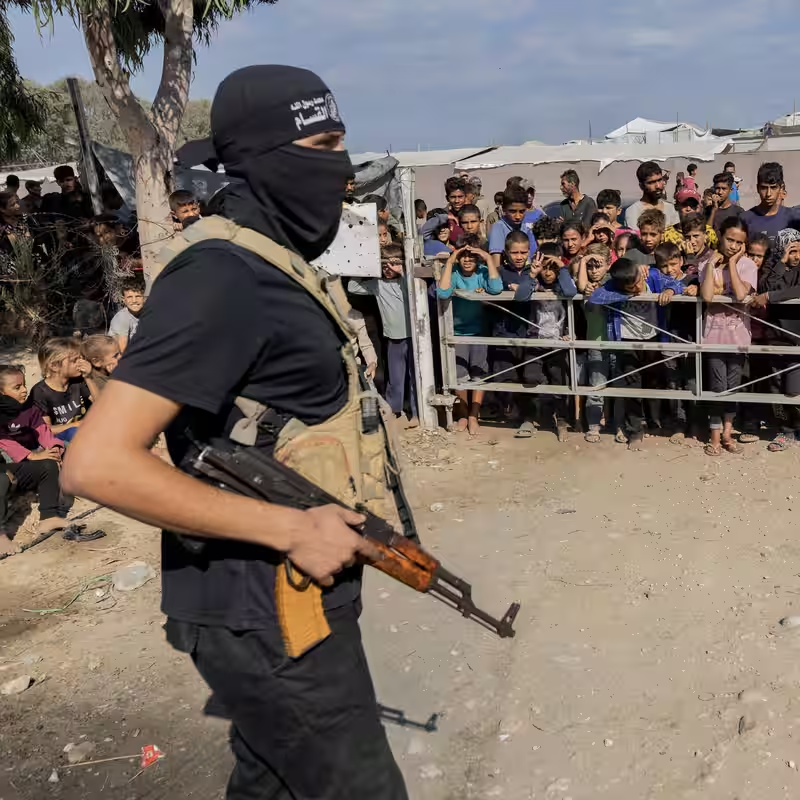Trump’s Gaza peace plan has cleared its first major hurdle—but the real test begins now. After two years of grueling negotiations, international pressure, and a dramatic hostage-prisoner exchange, a fragile cease-fire is holding in Gaza. Yet as world leaders gather in Sharm el-Sheikh, Egypt, the toughest challenge looms: convincing Hamas to lay down its arms for good.
What’s in Trump’s 20-Point Gaza Peace Plan?
Unveiled during high-stakes talks in Egypt, former U.S. President Donald Trump’s comprehensive proposal outlines a bold vision for post-war Gaza. At its core are three non-negotiable pillars for Israel:
- Full demilitarization of Hamas
- Establishment of an international security force in Gaza
- Creation of a temporary Palestinian governing body under international oversight
While the release of 20 living Israeli hostages and the return of others’ remains—exchanged for nearly 2,000 Palestinian prisoners—marked a breakthrough, these were just the opening moves. The real diplomatic chess game has only just begun.
Why Hamas Disarmament Is the Make-or-Break Issue
For Israel, led by Prime Minister Benjamin Netanyahu, any lasting peace hinges on one condition: Hamas must cease to exist as a military force. “Getting Israel’s hostages released and stopping the war may have taken two years,” analysts note, “but getting Hamas to give up its weapons could take far longer—or may never happen.”
Hamas, which has ruled Gaza since 2007, has never agreed to full disarmament. Its armed wing, the Al-Qassam Brigades, remains a central pillar of its identity and power. Asking it to surrender weapons isn’t just a security demand—it’s an existential threat to the group itself.
Phase Two: The “Day After” Dilemma
One of the most contentious issues deferred from initial cease-fire talks was governance: who runs Gaza the “day after” the war? This question was so fraught that negotiators split it into a second phase—now officially underway.
Trump, flanked by Egyptian President Abdel Fattah el-Sisi and other regional leaders, declared on Monday: “Phase 2 has started. It’s peace in the Middle East. Everyone said it’s not possible to do. And it’s going to happen.”
But optimism on stage contrasts with deep skepticism on the ground. Key unanswered questions include:
| Challenge | Why It Matters |
|---|---|
| Hamas Disarmament | Without it, Israel refuses full withdrawal from Gaza. |
| International Security Force | No country has yet committed troops; mandate and rules of engagement unclear. |
| Palestinian Governance | Fatah, Hamas, and civil society groups all claim legitimacy—consensus is elusive. |
| Rebuilding Gaza | Estimated cost: $50+ billion. Donor fatigue and political risk loom large. |
What Comes Next?
Diplomats are racing to turn Trump’s 20-point framework into actionable agreements before the cease-fire frays. Backchannel talks are ongoing between Egyptian, Qatari, and U.S. envoys, with Jordan and Saudi Arabia also playing quiet but critical roles.
Yet history offers caution. Past attempts to demilitarize Gaza or install neutral governance have collapsed amid mutual distrust. This time, however, the stakes—and the spotlight—are higher than ever.
As one senior Middle East analyst put it: “Phase One was about saving lives. Phase Two is about building a future. And that’s infinitely harder.”




